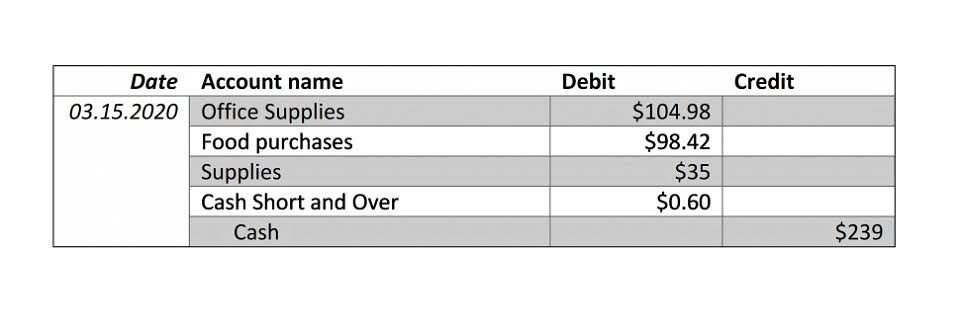GAAP vs IFRS: Analysis and Income Statement Presentation Explained: Definition, Examples, Practice & Video Lessons

For non-SEC registrants under GAAP, there is limited guidance on the presentation of the income statement, just as with IFRS. The income statement usually covers a period of time, such as one fiscal quarter or year, and can be used to assess the financial health of a company as well as determine the profitability of the business. Hence, it gives investors the necessary information to make a decision on a company. The statement can show whether a business is generating a profit or not and if a business spends more than it earns. Any company that distributes financial statements publicly should use some form of established accounting principles. About 160 jurisdictions have made a public commitment to IFRS reporting standards, and 147 require public listed entities to follow IFRS accounting standards.
Presentation of expenses by function or nature

This consistency in accounting language enables investors and creditors to understand Bookstime a company’s financials, compare one IFRS-compliant company to another IFRS-compliant company, which helps in making investment decisions. The handling of R&D costs can greatly impact how companies are valued. IFRS, however, lets companies capitalize on certain development costs. This move can increase the worth of intangible assets and change how total equity is shown. In contrast to US GAAP, the IFRS accounting system adheres to International Financial Reporting Standards.

The Cash Flow Statement

With IFRS, by contrast, fixed assets are initially valued at cost but can later be revalued (up or down) based on current market value. Explore our online finance and accounting courses, which can teach you the key financial concepts you need to understand business performance and potential. To get a jumpstart on building your financial literacy, download our free Financial Terms Cheat Sheet. The rules of GAAP do not allow for an asset’s value to be written back up after it’s been impaired.
Historical Background and Development
The relevance of IFRS for a company is with the listing of the shares in the public stock exchange. If you’re seeking financing for your business, SoFi is here to support you. On SoFi’s marketplace, you can shop and compare financing options for your business in minutes. You are now leaving the SoFi website and entering a third-party website. SoFi has no control over the content, products or services offered nor the security or privacy of information transmitted to others via their website.
- In comparison, IFRS accounting standards focus on presenting a company’s true financial position.
- By submitting, you agree that KPMG LLP may process any personal information you provide pursuant to KPMG LLP’s Privacy Statement.
- When expenses are presented by function they are allocated to, for example, cost of sales, selling or administrative activities.
- International Financial Reporting Standards (IFRS) are issued by the International Accounting Standards Board (IASB), and they specify exactly how accountants must maintain and report their accounts.
- When a company holds investments such as shares, bonds, or derivatives on its balance sheet, it must account for them and their changes in value.
- Knowing how to analyze financial statements can improve your ability to communicate results and boost collaboration with colleagues in more numbers-focused positions.
At the conceptual level, IFRS is considered more of a principles-based accounting standard in contrast to GAAP, which is considered more rules-based. However, they differ in several ways, including their conceptual frameworks, treatment of specific accounting issues, and geographical adoption. This blog also explained that IFRS is more principles-based, While GAAP is frequently more rule-based. On the other hand, GAAP financial statements prepared under GAAP guidelines follow a similar structure to IFRS. However, there may be differences in terminology, presentation order, and disclosure requirements.
- The way financial statements are set up also reflects their principles.
- They want to protect the interests of investors who have resisted adopting IFRS.
- Lastly, companies should provide an explanation of the nature of the amount and why the item has been classified in this manner.
- In the United States, accountants follow the generally accepted accounting principles (GAAP) when they compile financial statements.
- IFRS has experienced widespread adoption on a global scale, particularly in regions seeking to align with international accounting standards to facilitate cross-border investment and enhance transparency.
What is the primary difference between GAAP and IFRS?

Under GAAP, the Financial Accounting Standards Board (FASB) introduced ASC 842, which requires lessees to recognize most leases on the balance sheet, thereby increasing transparency. The income statement under GAAP can be presented in either a single-step or multi-step format. The single-step format aggregates all revenues and gains, and subtracts all expenses and losses to arrive gaap vs ifrs income statement at net income. The multi-step format, on the other hand, separates operating revenues and expenses from non-operating items, providing a more detailed view of a company’s core business performance. IFRS does not prescribe a specific format for the income statement, allowing companies to choose the presentation that best reflects their operations.
- In 2007 and 2008, as financial institutions put goodwill in this category from acquisitions gone bad because of the mortgage mess, they usually put it down as an extraordinary item.
- This statement is similar in both the IFRS and GAAP standards, unless a non-U.S.
- On the other hand, IFRS stands for International Financial Reporting Standard.
- One of the reasons IFRS does not support LIFO is that it’s impossible to achieve accurate inventory flow using this method.
- IFRS permits the use of either the direct or indirect method, with a preference for the direct method, which reports cash receipts and payments from operating activities directly.
Regardless of the approach used, companies need to ensure the presentation is not misleading and is relevant to the understanding of the financial statements. Lastly, if presenting expenses by function, companies are required to include additional information on the nature of expenses (e.g. depreciation, amortization and staff costs) in the notes to the financial statements. Under IFRS, the income statement is retained earnings labeled ‘statement of profit or loss’. Like US GAAP, the income statement captures most, but not all, revenues, income and expenses. Other items of comprehensive income (OCI) do not flow through profit and loss. Examples include the fair value remeasurement of certain equity instruments, remeasurements of defined benefit plans, and the effective portion of cash flow hedges change in fair value.
GAAP addresses such things as revenue recognition, balance sheet, item classification, and outstanding share measurements. If a financial statement is not prepared using GAAP, investors should be cautious. Also, some companies may use both GAAP- and non-GAAP-compliant measures when reporting financial results.